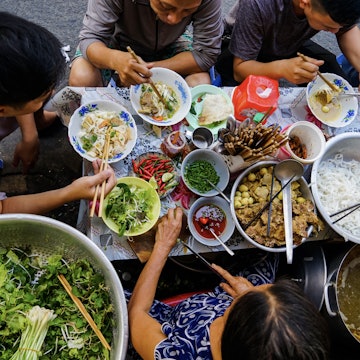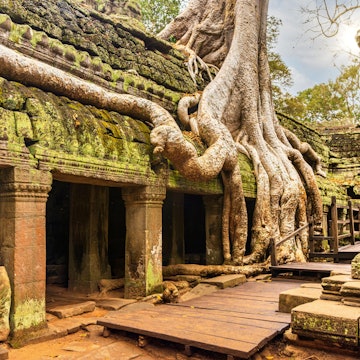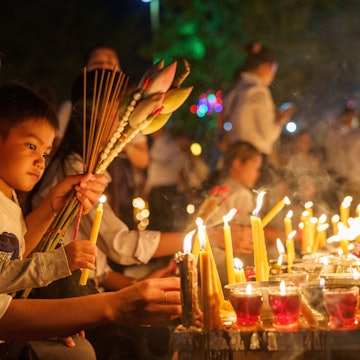
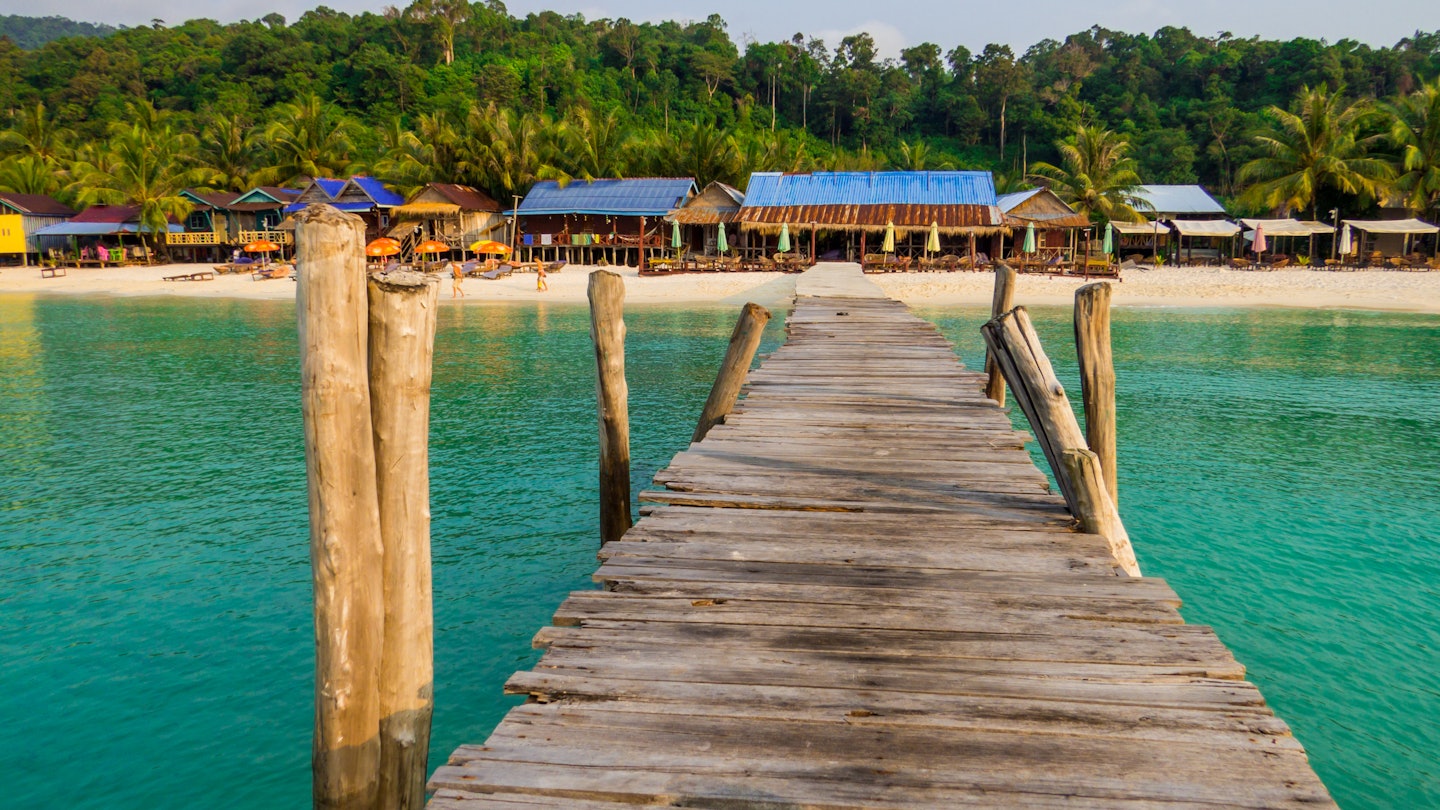
Sok San in Koh Rong. Stock Photos 2000/Shutterstock
After a few weird years – closures, karaoke takeovers and bursts of overambitious resort building – a new rhythm has taken hold at Cambodia's islands. Some are roaring; some are quietly thriving; others are doing what they’ve always done: catching fish, building boats and occasionally handing over a cold beer (or coconut) to a traveler who has wandered too far south.
Koh Rong and Koh Rong Sanloem are the headliners, with a full spread of ferries, accomodations, bars and beach umbrellas. But the soul of the islands reveals itself around the edges. Koh Ta Kiev still runs on candles and curiosity. Koh Sdach, once left for dead, is mounting a low-key comeback. In between are jungle outposts, watercraft, waterfalls, shipwrecks, slow-going fishing villages and strange little hideaways that feel like a secret worth keeping.
Chart your first visit with this guide to the costs, the climate and the particulars about Cambodia's islands.
When should I go to Cambodia’s islands?
November through March is the very best time to visit Cambodia, but the fun (and the sun) runs directly into the arrival of the annual monsoon rains, usually sometime in May, after which temperatures peak upward of 35°C (95°F).
There’s a sweet spot in late April, after the Chaul Chnam Khmer (Khmer New Year) crowds have disappeared and before the wet season arrives. Activity might be slightly scaled back compared to the high season, but accommodations will be cheaper and you’ll have more beach to yourself. Contact businesses directly for the best rates.
From June and July to September, the rains are at their heaviest and the seas their wildest, sometimes interfering with ferry access. Some businesses shut up shop for the season, and parts of the islands take on a castaway vibe. It’s the wrong time for a standard postcard getaway, but for those with a penchant for nature’s fury (and discounts), Cambodia's islands make a dreamy escape, with a chance that each day's rain is limited to just an hour or two in the midafternoon – and some days it won’t come at all.

How much time should I spend in Cambodia’s islands?
How long is a stick? Cambodia’s islands are full of people who arrived for a short time and never left – locals and foreigners now making up large parts of the tourist-facing communities. You could come for an opulent seaside getaway, never leave the resort and have the most magical weekend of your life; or you could spend a whole summer tripping from island to island looking for a new favorite beach while learning the ropes and the laid-back rhythm of life.
Budget at least four or five nights to see Koh Rong and Koh Rong Sanloem. If you’ve got only two nights, pick one and settle in, or head for Koh Ta Kiev or Koh Sdach. Give yourself 10 days to see them all.
Is it easy to get to and around Cambodia’s islands?
Yes…well, mostly. Sihanoukville, on Cambodia’s southern coast, is the main hub for island access. Multiple companies run ferries from the mainland to Koh Rong and Koh Rong Sanloem between 8am and 4pm in the high season. It’s US$25 for an open round-trip ticket, and the trip takes between 30 and 45 minutes.
For Koh Sdach, a single Buva Sea ferry runs daily and takes about three hours. Alternatively, take the bus or a taxi to Dara Sakor (adds an hour to the journey from Phnom Penh), and then a long-tail boat organized through your lodging will take you to the island in 15 minutes.
Long-tail boats to Koh Ta Kiev take less than an hour and should be organized through your accommodations. Check Bookmebus for schedules and tickets.

1. Koh Rong
Best island for adventure
A hundred adventures await in Koh Rong – get off the boat, rent a scooter and get to work. Or let an island limousine (a tuk-tuk) chaperone you straight to a poolside daybed and its companion cocktail menu. The lord of Cambodia’s holiday islands caters to revelry, relaxation, indulgence and adventure, with a network of roads and enough space in between so all coexist happily. Long Set Beach (aka Main Beach) hosts a strip of trendy resorts and upmarket backpacker joints – where the biggest parties happen.
The main village of Koh Touch is the island hub, with the most amenities and slightly seedy after-dark establishments that don’t quite live up to the stereotypical port-town debauchery (or maybe we just didn’t look hard enough). In the island’s far north, Lonely Beach is a magical strip of solace, and Prek Svay is the quirkiest of the island’s communities.
For the wild ones, there’s a sniff of something ominous on the horizon: a posse of modern-day party pirates has assembled, planted their flag and declared that Kerfuffle Bay will resurrect the spirit of festivals that raged in the same name on Otres Beach a decade ago, when Sihanoukville was a rite of passage on the backpacker trail.
Koh Rong's other best bits include the resorts at Pagoda Beach in the east; the daily gathering for US$2 cocktails from 1pm to 6pm at the Palm Beach Bungalow Resort bar; and the 7km (4-mile) white sand stretch known as Long Beach, where people gather to watch the sun melt away.
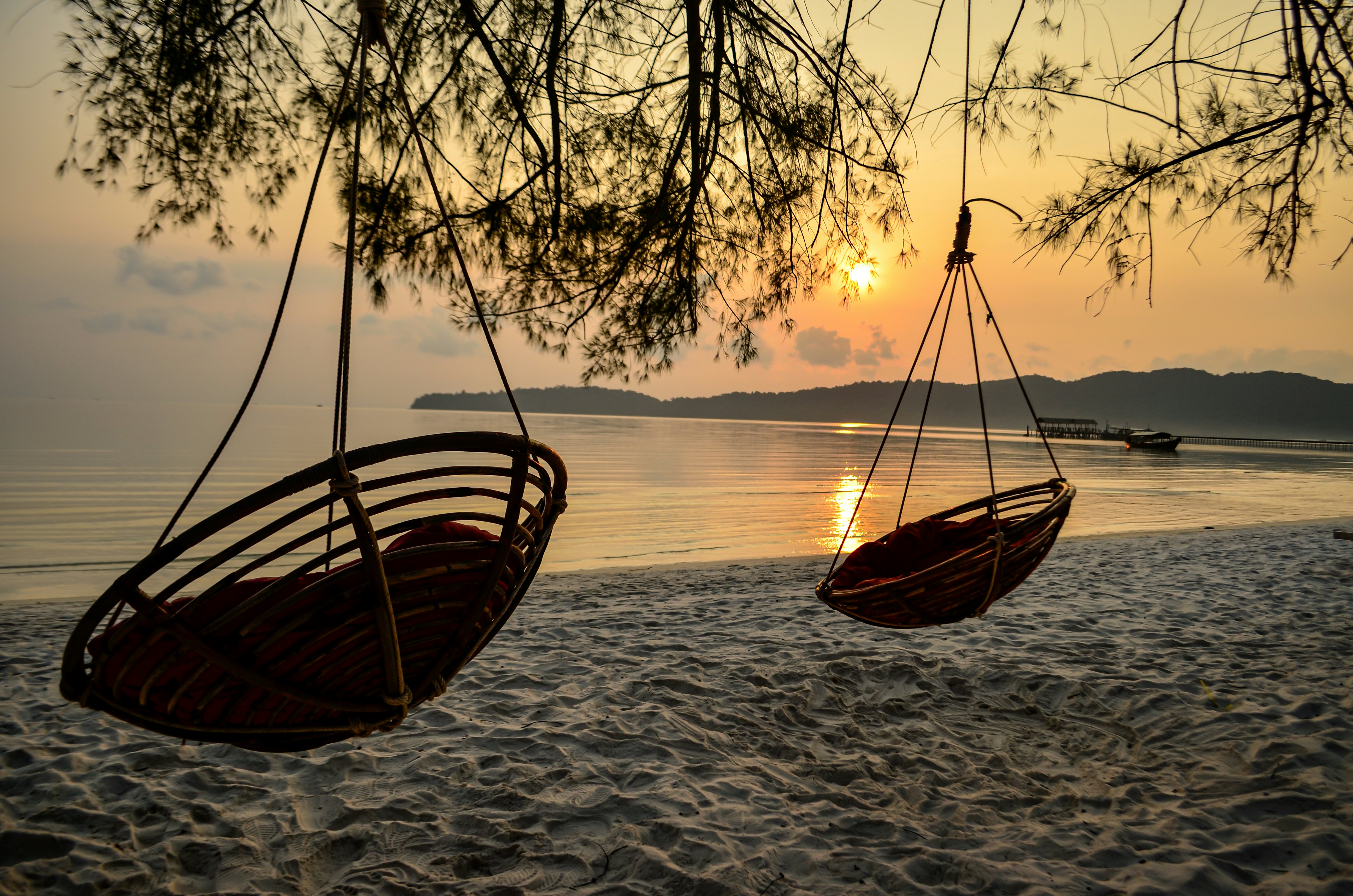
2. Koh Rong Sanloem
Best island for indulgence
Once the underdog and second sibling to Koh Rong, Koh Rong Sanloem has grown into an elite destination of its own. The east-facing 2.5km (1.5-mile) white sand crescent known as Saracen Bay is its centerpiece and main landing point for visitors. Leisure activities from all parts of the holiday spectrum are available in these tranquil, shallow waters, from complete sensory escape to fire-spinning revelry.
On Sanloem’s backside, Lazy Beach and Sunset Beach have slightly wilder, cooler waters and are more rugged and remote but without skimping on the creature comforts. Make the trip to the lighthouse, which you can climb to the top of, and the mysterious mountain stone carvings, which the locals must be hiding truths about.
The threat of development around Sanloem has been swirling for years, and swaths of its jungle interior have been flattened for roads. Still unconnected, though, is the rising star of Cambodia’s islands: M’Pai Bay, where people from all over have gathered around the island’s northernmost point and created an off-beat bohemian village of bars and restaurants serving food from around the world. You’ll be pleasantly surprised. Look out for Dave Fest, which debuted in November 2024 on a whim but proved too much fun not to become a tradition.

3. Koh Sdach
Best island for local insight
Once a speck on the map for crusty divers and shoestring volunteer outfits, the fishing hub of Koh Sdach got wiped out by the pandemic, then swarmed by weekenders looking for clear water and somewhere to point a drone. Rubbish piled up, speakers blew from karaoke, and then it all went quiet again.
Now, with a new highway from Phnom Penh and a daily ferry, a cleaned-up Koh Sdach is reborn. The fishing village is thriving again, and a fresh crop of homestays complements the lavish resorts and brand-new Mad Monkey guesthouse that straddles the fine line between ice plunges and beer pong.
Of all Cambodia’s island offerings, Koh Sdach might be the most authentic experience you can have – you just need to peel yourself away from the island's luxuries and head into the real world on an unscripted walk.

4. Koh Ta Kiev
Best island for disconnecting
Koh Ta Kiev doesn’t know what time it is, and neither will you after a day or two. As yet unstruck by the development stick, this hidden gem exists in a time warp, a few decades behind the well-worn island playgrounds to the west. There are no roads, there's no electricity grid, and there are no worries here. Hammocks to the fore. The beaches? Immaculate.
Days can be for fishing, cliff jumping, snorkeling, beach walks and rifling through the bush. Sunsets are sacred. And nights are for bonfires and bioluminescent plankton. Camping is common. Among the three or four accommodations scattered around the island is Kactus Koh Ta Kiev, a daydreamer’s retreat: treehouses and bungalows, wholesome food, meditation and musical jam sessions, sunset saunas and a treasure-filled workshop where driftwood and ocean plastics become works of art.
There are no ATMs or shops on Koh Ta Kiev and wi-fi access is limited, so bring what you’ll need and sort your business before you leave the mainland.
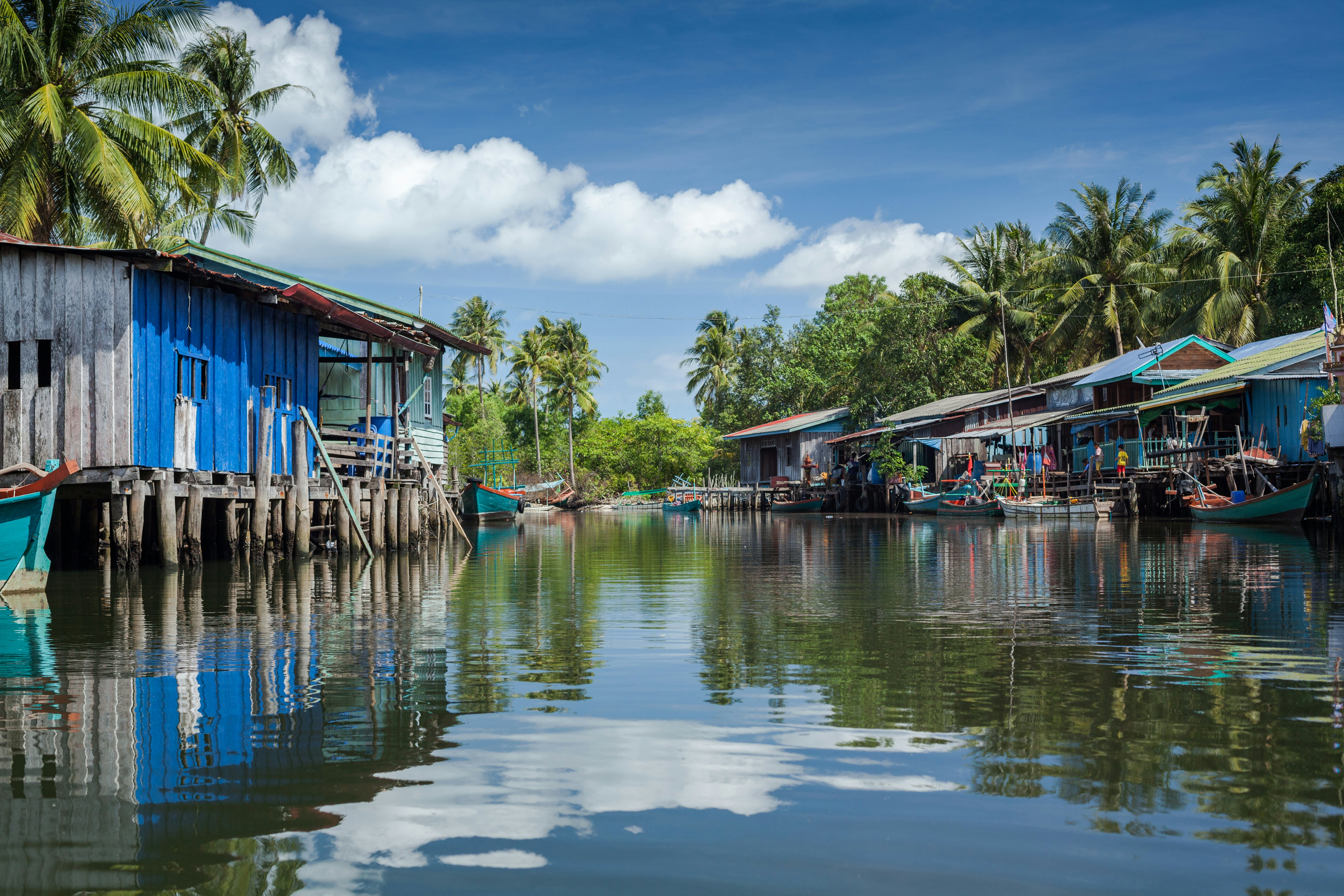
My favorite thing to do in Cambodia’s islands
They do things a bit differently in Prek Svay. Rent a kayak from Lily’s Riverhouse and glide through the mangroves toward the ocean, stopping at Natural Kitchen, a palace of upcycled everything, with a French chef and a friendly otter that often comes ashore to mingle with the cats and dogs.
Before too long, the stream bisects the village, and you’ll see local life from an angle that’s otherwise not possible. Paddle toward the river mouth, which opens into calm, shallow seas and a wrecked fishing boat on the high point of a tiny tidal island. Or pull to the left at Firefly Guesthouse, where you can have a delicious, creamy laksa while staring at the US$1000 per night Song Saa private island, where the chef used to cook.
For the true seekers: a roadside stall in town sells Grandmother Sokhom’s hand-pressed coconut oil in old brown bottles – a treasure that draws people from Phnom Penh. Prek Svay Waterfall is well worth the half-hour walk. And the curious should find Art Cafe, a pink palace of handcrafted corsets, costumes and other creations by a friendly long-term island resident named Irina, who can also cook you lunch.
How much money do I need for Cambodia’s islands?
Cambodia’s islands have everything from US$10 dorm beds to US$1000 per night villas, US$2 street eats to world-class cuisine, and everything in between. If you’re skimping, you could spend less than US$25 a day and still have a good time; budget US$70 a day and you can achieve a basic level of decadence. To live lavishly, you can spend hundreds every day.
Round-trip ferry ticket: US$25
Night in a nice beachside bungalow: from US$60
Grilled fresh snapper on the beach: US$7
Fishing trip: US$20
Half hour on a watercraft: US$50
Full-day kayak rental: US$5
Cheese and cold cuts at The Balcony: from US$14
Bottle of handmade coconut oil: US$3
Island transfer: US$10

Double-check arrival details
Not all ferry companies stop at all beaches and piers on the islands. Some beaches have no ferry service at all. Check with your accommodations before booking, so you know if there’s a walk or an onward boat from the ferry to get to your spot.
Be water safe
There are no lifeguards on Cambodia’s islands. While the seas are mostly tranquil, in the event that something goes wrong, you are on your own.
Come with cash
There are no ATMs on the islands. Some businesses that have credit card facilities will do cash withdrawals but charge a premium of at least 6%, so bring cash if at all possible. There are limited medical supplies on the island too: the only pharmacy is in Koh Rong.
Dive deeper
Beyond the four islands listed, Koh Thmei is a unique off-grid escape worth knowing, and further out, a string of remote islands is finally opening up. Superlative diving tours through Khmer Dive Group visit Condor Reef, shipwrecks and the beginnings of an underwater war museum around Koh Tang, site of the last battle of the Vietnam War.









